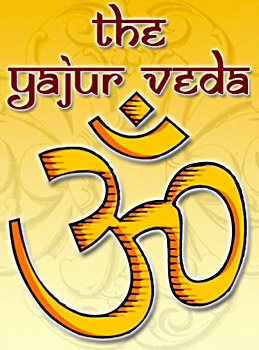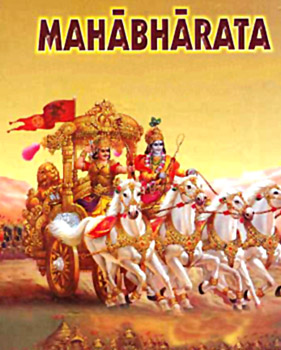 Literary sources for ancient Indian society mainly include the Vedic texts, the Epics as well as the Indian Puranas. Further, in Sanskrit literature and in Indo Aryan literature, the evolution of the ancient societies in India is very well reflected. Besides these literary sources of the ancient Indian societies, the various Buddhist Pali works, mainly Jatakas, and Jain works also provide significant references to the ancient eras. Interestingly, the Rig Veda is considered as one of the most primitive written records of Indo-Europeans and their considerably high degree civilisations. In Vedic Samhitas too, the origin and other references of the ancient Indian societies can be found. It mainly includes the Yajur Veda, Sama Veda and Atharva Veda. Not only these, numerous poetical works, dramas and prose disclose some significant information about the ancient Indian societies. They mainly comprise references about what was considered ideal and what basically happened in the societies of the past.
Literary sources for ancient Indian society mainly include the Vedic texts, the Epics as well as the Indian Puranas. Further, in Sanskrit literature and in Indo Aryan literature, the evolution of the ancient societies in India is very well reflected. Besides these literary sources of the ancient Indian societies, the various Buddhist Pali works, mainly Jatakas, and Jain works also provide significant references to the ancient eras. Interestingly, the Rig Veda is considered as one of the most primitive written records of Indo-Europeans and their considerably high degree civilisations. In Vedic Samhitas too, the origin and other references of the ancient Indian societies can be found. It mainly includes the Yajur Veda, Sama Veda and Atharva Veda. Not only these, numerous poetical works, dramas and prose disclose some significant information about the ancient Indian societies. They mainly comprise references about what was considered ideal and what basically happened in the societies of the past.
It has been aptly said according to the literary sources of the ancient Indian societies that Vedic civilisation has dawn but no twilight. The same remark is applicable to the Vedic Samhita. The age of the Rig-Veda is still uncertain but most of the modern scholars would place it around 1500 B.C. The other Vedic Samhitas are the Yajur Veda, Sama Veda and Atharva Veda. While the Rig Veda basically contains Mantras about the different aspects of nature, conceived as deities, the Yajur Veda comprises matters for ritual application of the ancient societies. On the other hand, the Sama Veda is a compilation of hymns to be sung in sacrifices. The matters in Atharva Veda reflect the common practices and beliefs, which were prevalent in the societies. The Vedic Samhitas are followed by Brahmanas. These are basically the prose works that deal methodically with the practices of Vedic rites and rituals. Their contents are largely divided as Vidhi (injunctions), Artha Veda (explanation) and Upanishad (secret doctrines). The Upanishads deal with inspiring thoughts about the philosophy of life. Then came the Sutra period in which the earlier knowledge about the ancient Indian societies was systematised and presented in mnemonic aphoristic style.
On the other hand, the Sama Veda is a compilation of hymns to be sung in sacrifices. The matters in Atharva Veda reflect the common practices and beliefs, which were prevalent in the societies. The Vedic Samhitas are followed by Brahmanas. These are basically the prose works that deal methodically with the practices of Vedic rites and rituals. Their contents are largely divided as Vidhi (injunctions), Artha Veda (explanation) and Upanishad (secret doctrines). The Upanishads deal with inspiring thoughts about the philosophy of life. Then came the Sutra period in which the earlier knowledge about the ancient Indian societies was systematised and presented in mnemonic aphoristic style.
The Vedic texts and the Upanishads explained the philosophical ideas. With the passage of time, different philosophical ideas developed in the society and they took a clear shape gradually. The different aspects and prominent beliefs of the ancient society get reflected through the various literary sources. An effort at systematisation of the various philosophical ideas resulted in the formulation of Sutras about the different thought systems. Some detailed commentaries were also written for further explaining the ideas contained in the Sutras in course of time. The two greatest epics of the country, Ramayana and Mahabharata followed the Vedic period. However, it is not very clear when the epics actually originated. It is believed that the Mahabharata, in its present form, dates back to around 4th century A.D and Ramayana dates back to either a century or two earlier.
Indian Puranas are important class of Sanskrit literature. However, their precise date of origin is still unknown. It is believed that the early Puranas, however, appear to have been composed or compiled in the period between the 5th century B.C and 6th century A.D. They deal with all sorts of subjects ranging from creation to genealogies of kings. In short they are defined as epitomes of civilisation and culture of ancient Indian societies. Classical Sanskrit literature is supposed to have come into being in the post-Panini period. In course of time, a vast literature comprising prose, poetical and dramatic works, came into being. Indo Aryan literature also provides several significant facts about the ancient Indian societies.
The ancient Indian societies were considered to be very religious as per the different literary sources. The Vedic literature provides a glimpse of the vast culture and civilisation of the ancient Indian societies whereas the two greatest epics as well as the Buddhist and Jaina religious texts give some significant historical material about the societies. The Upanishads are considered as the main basis of Indian philosophy, which are also known as Vedanta Philosophy.



















